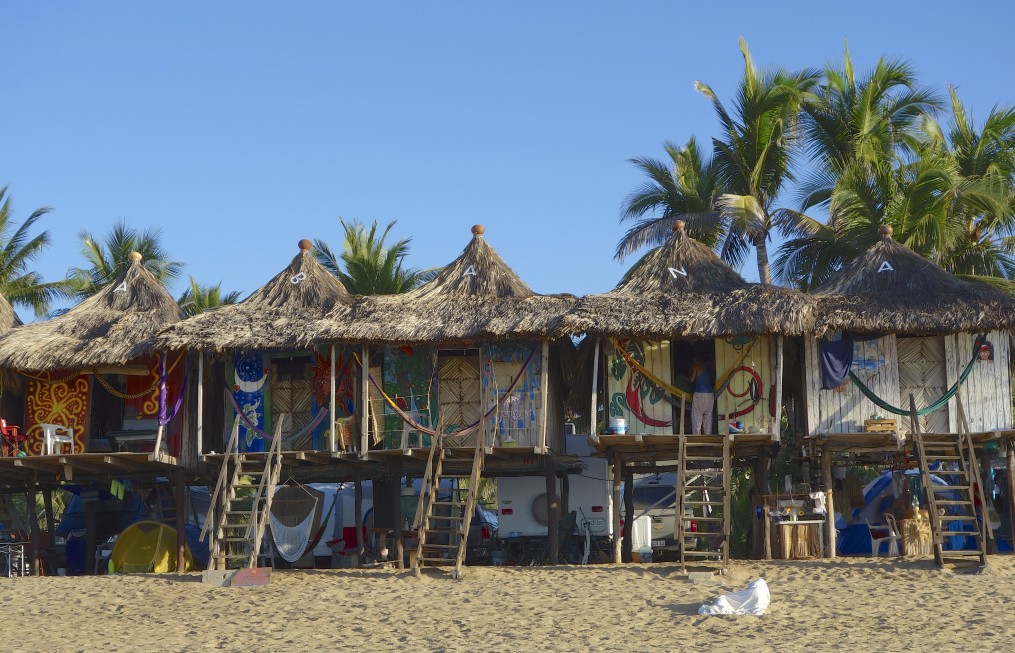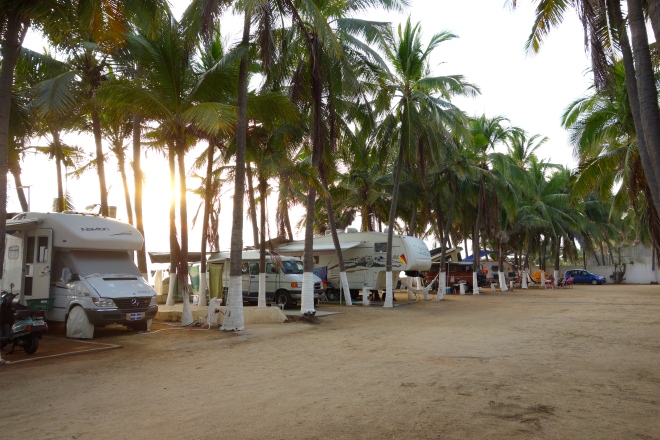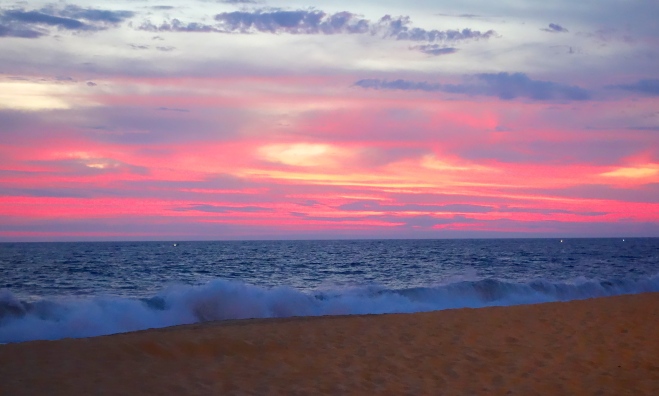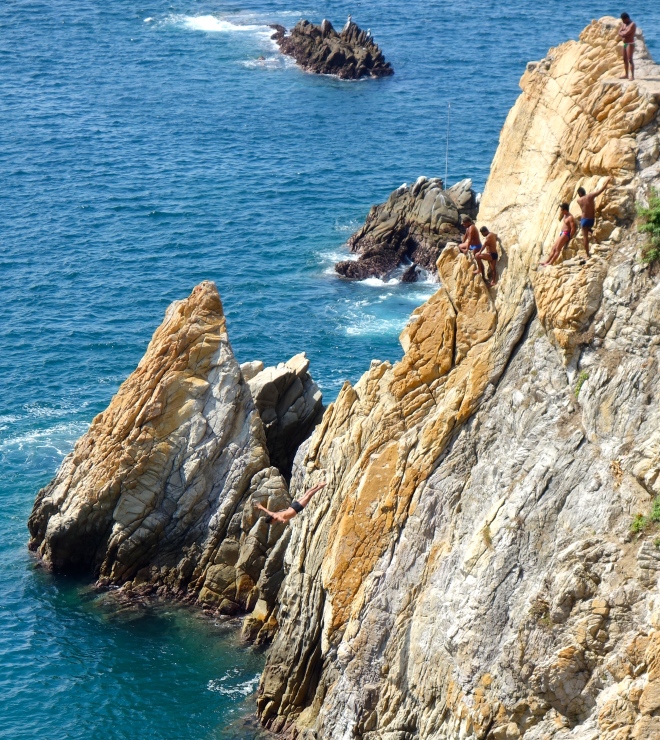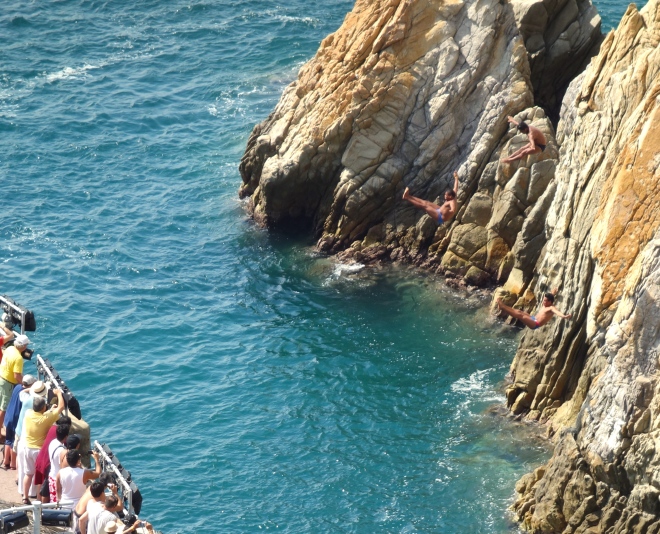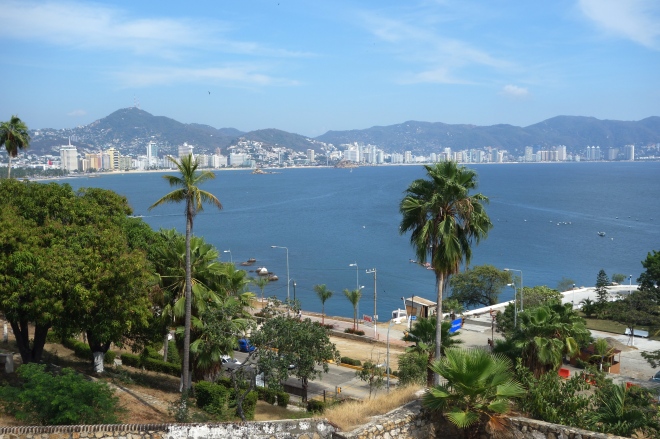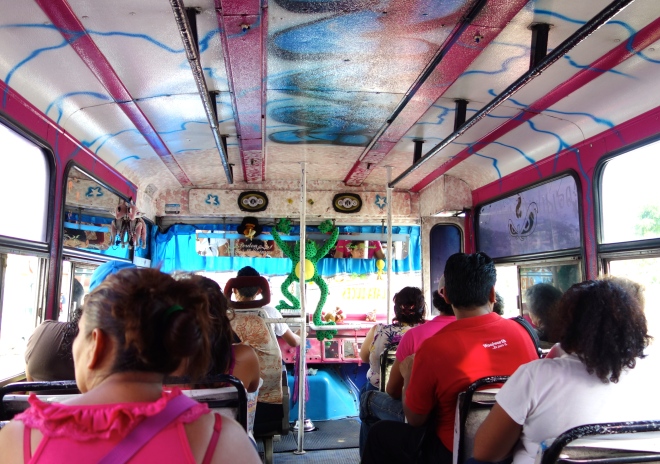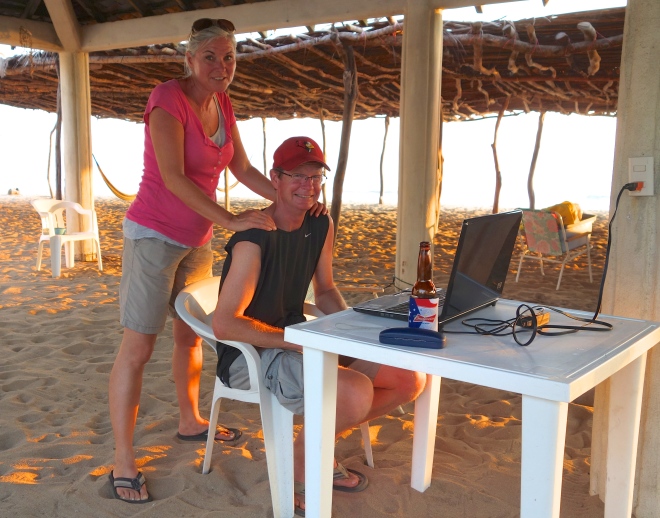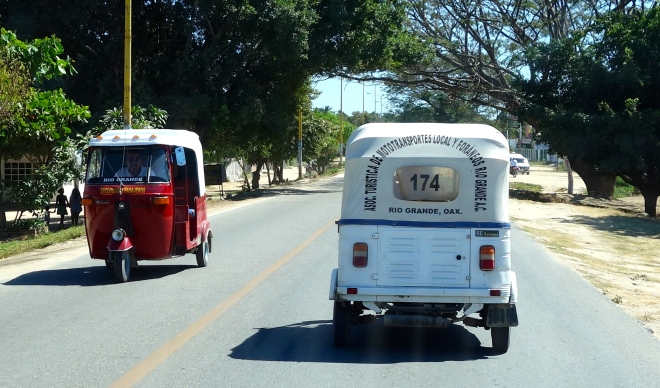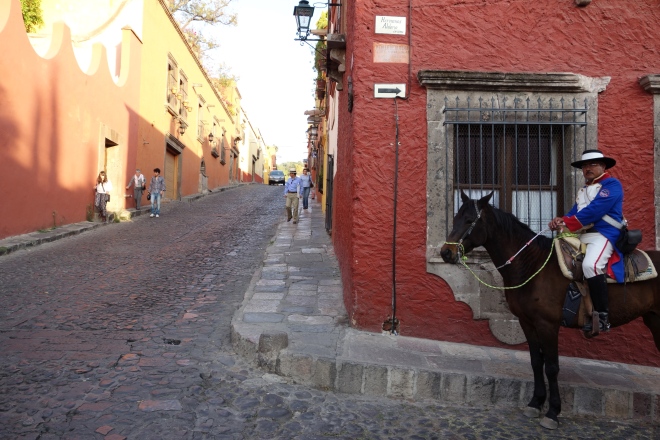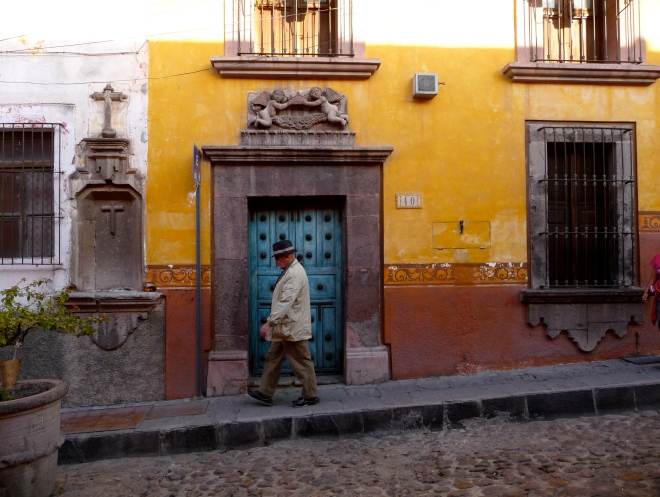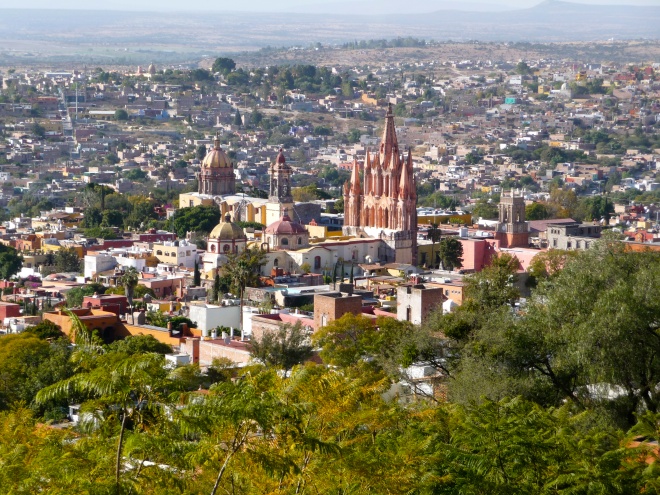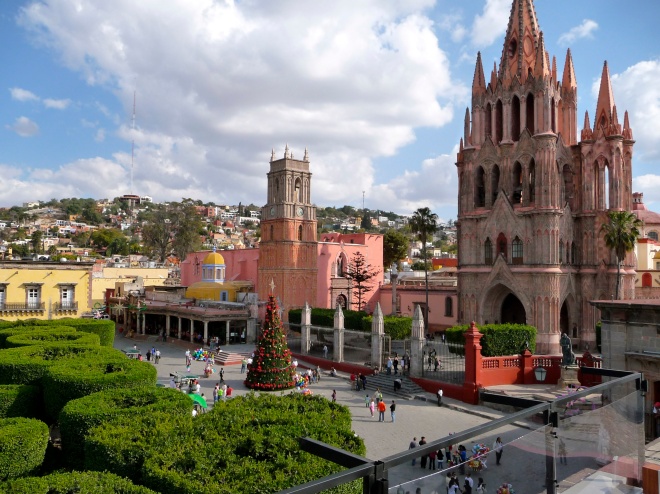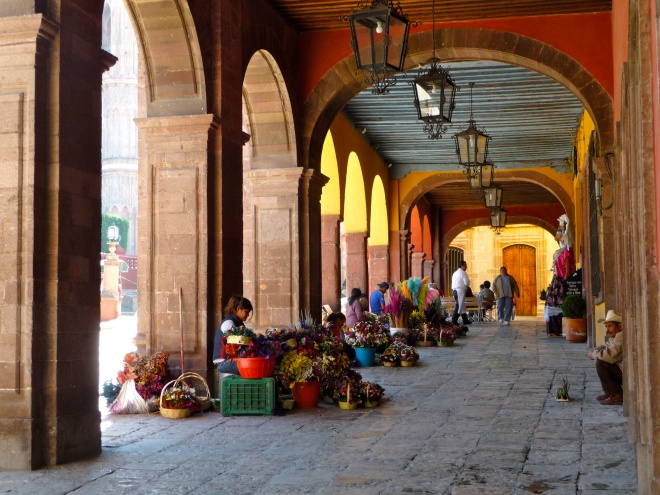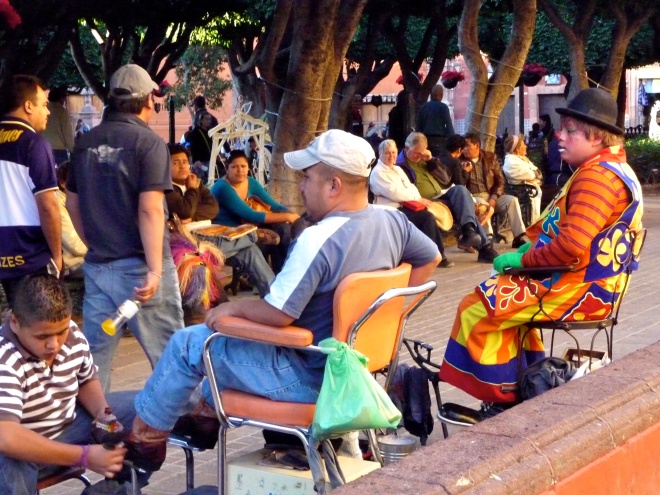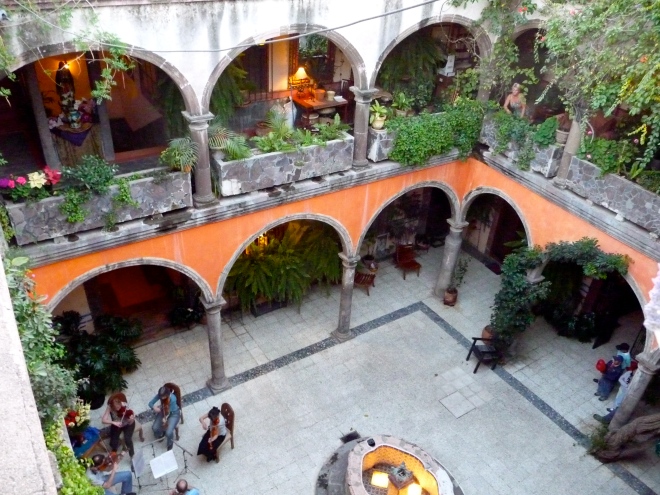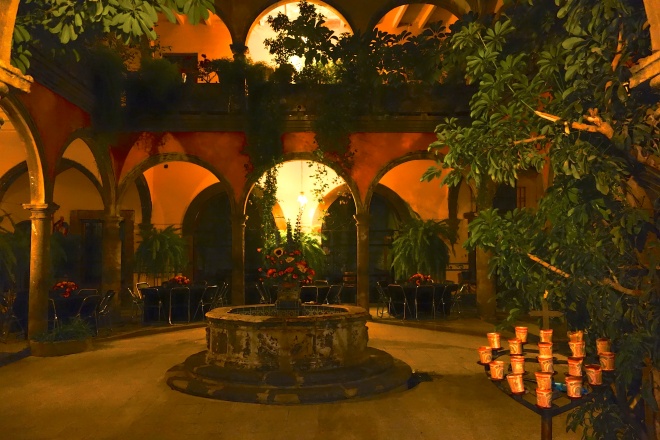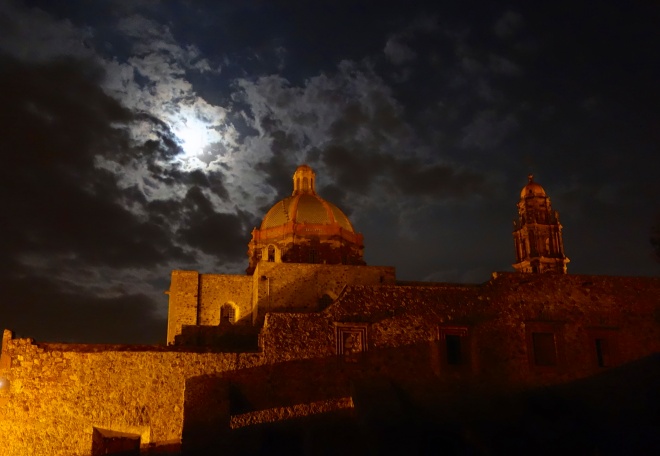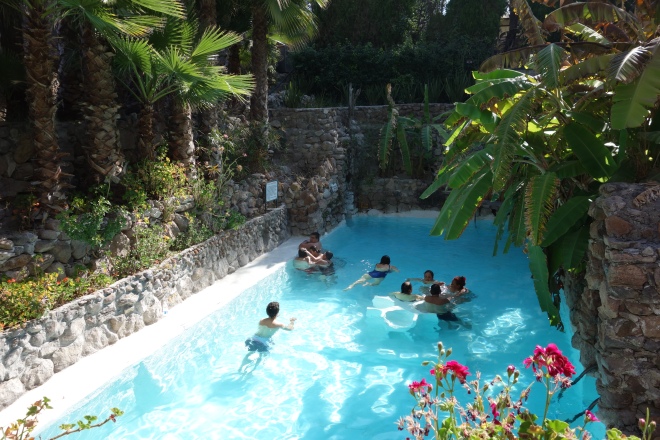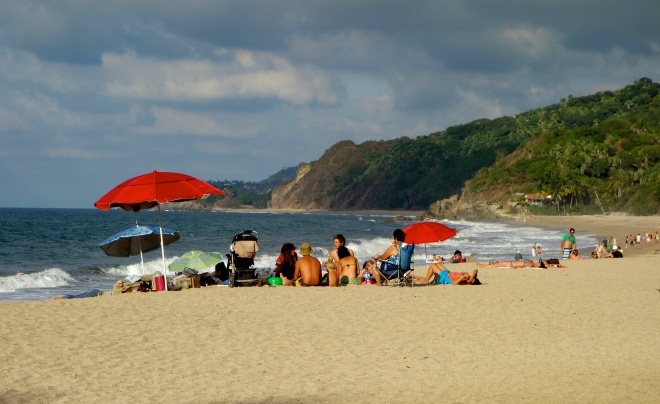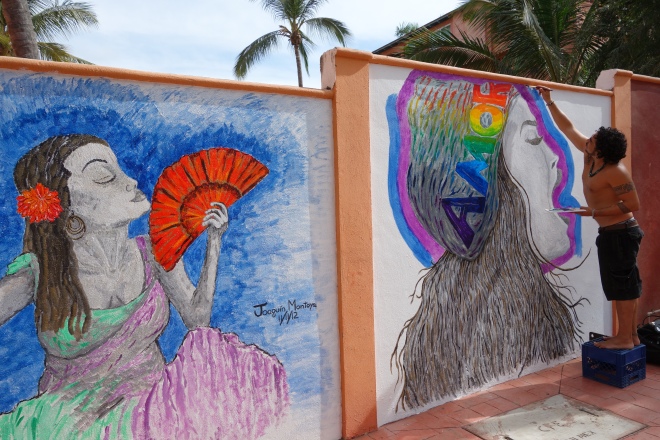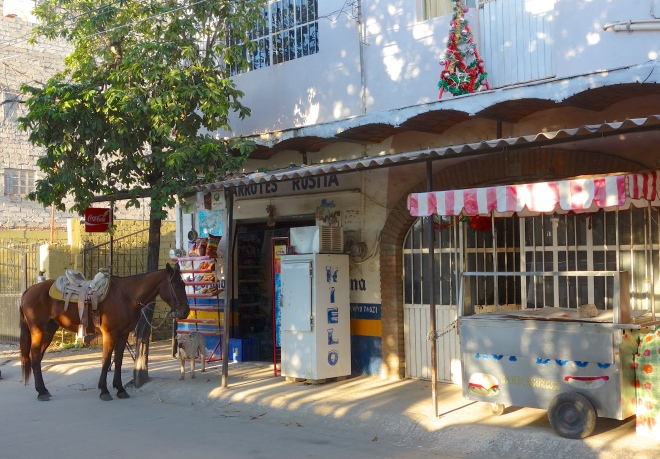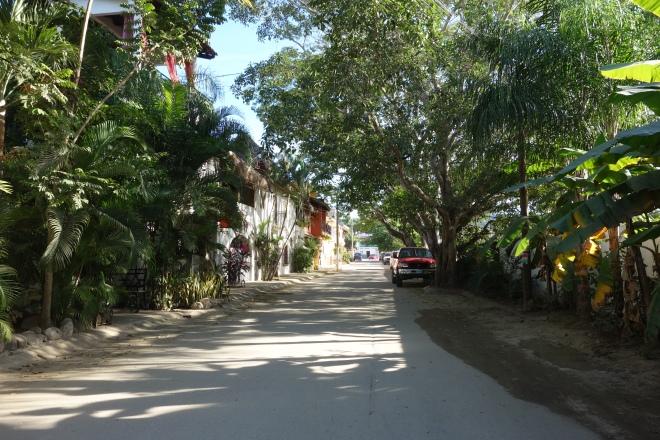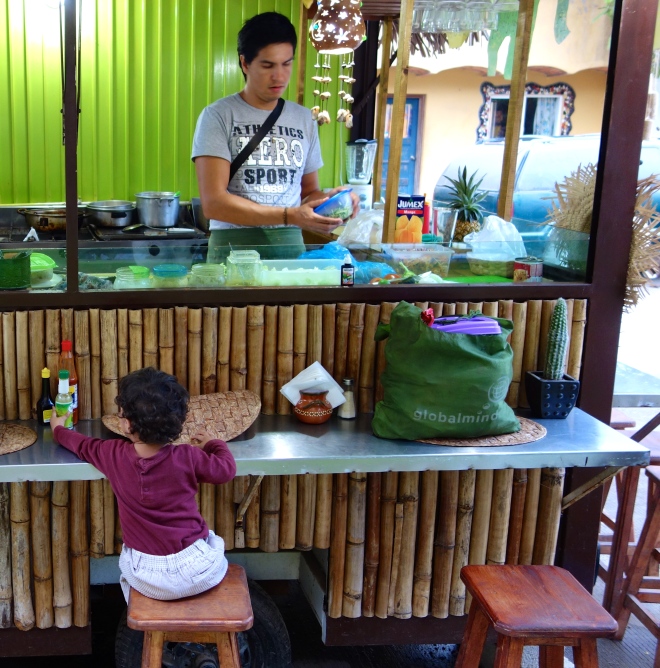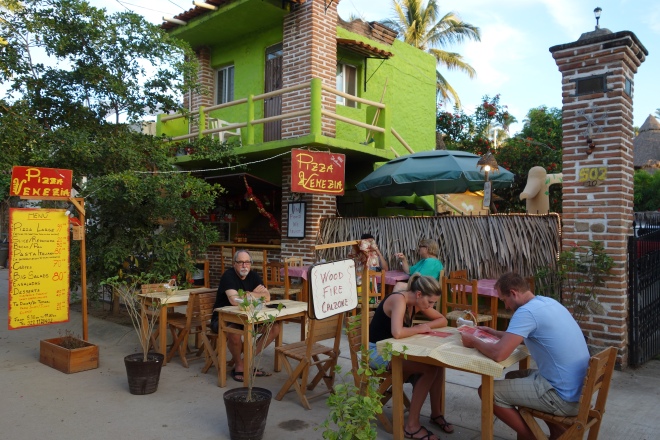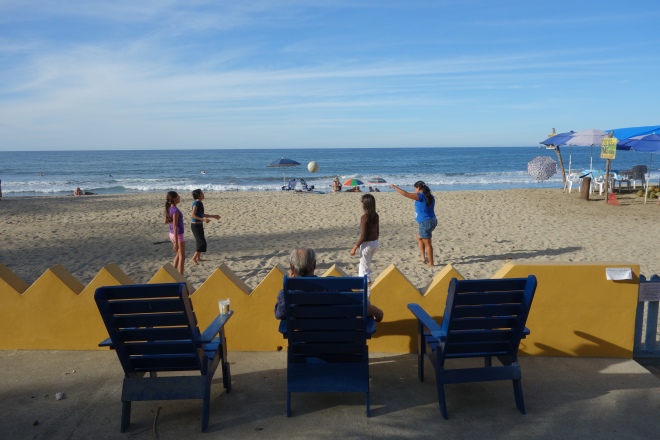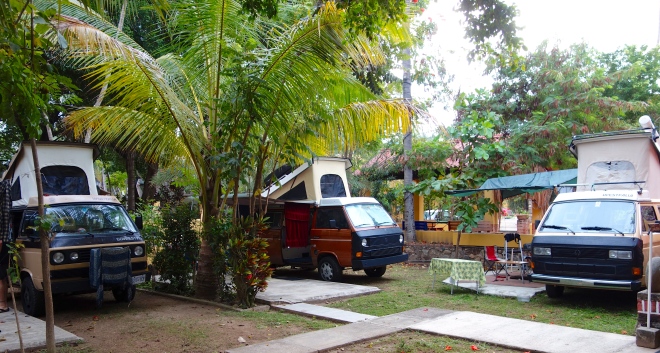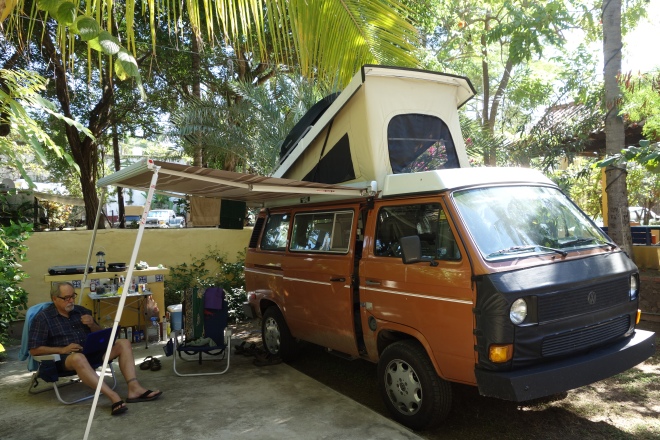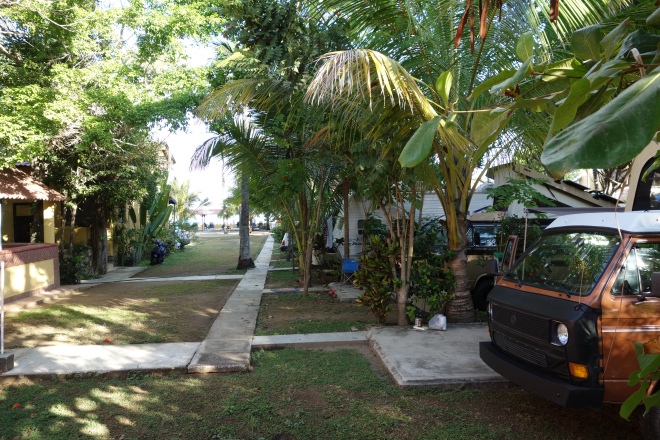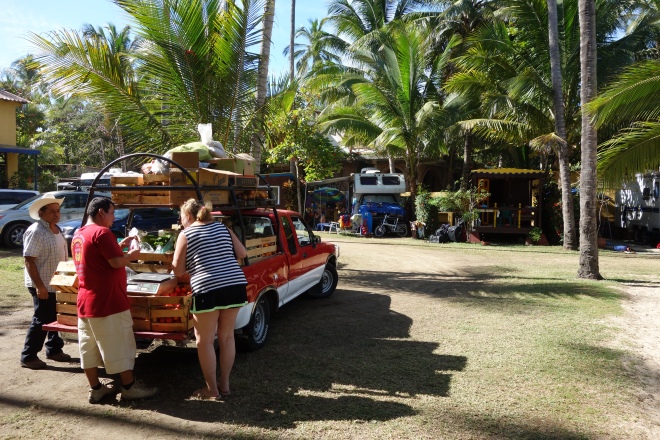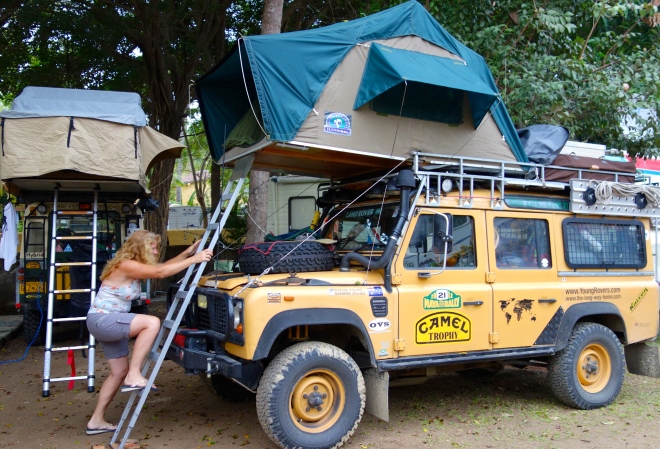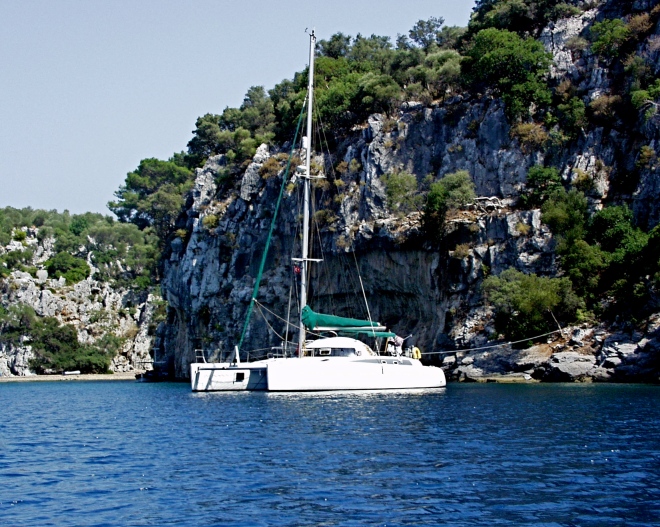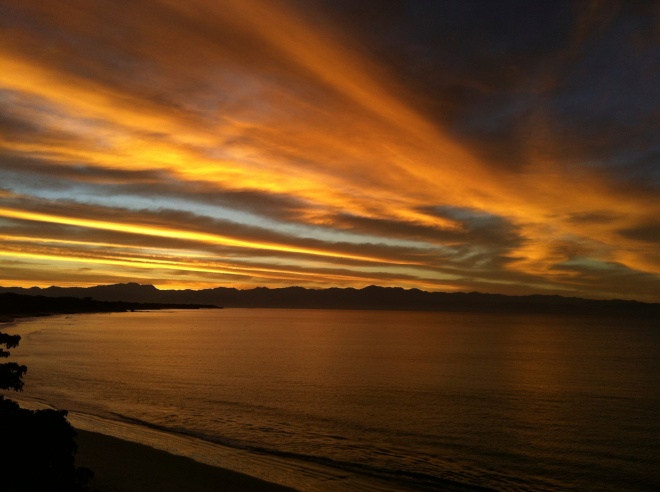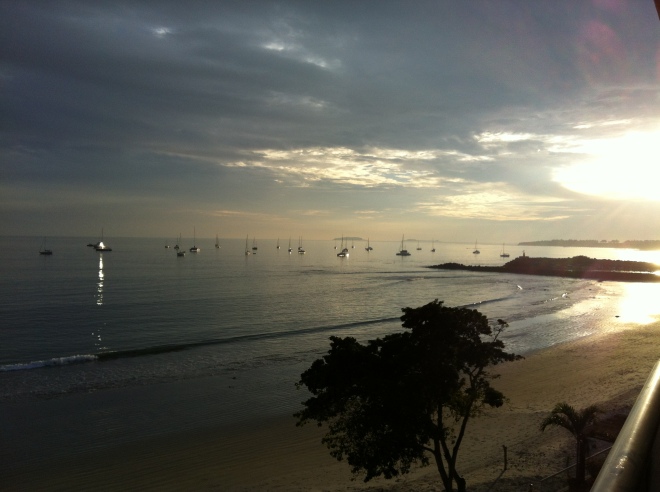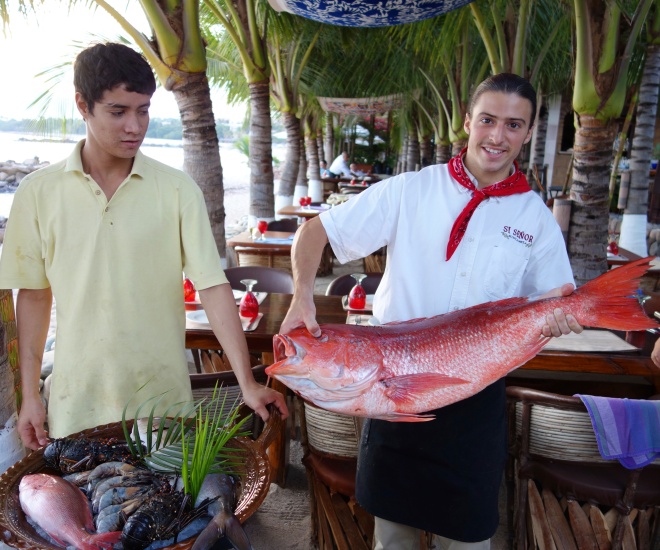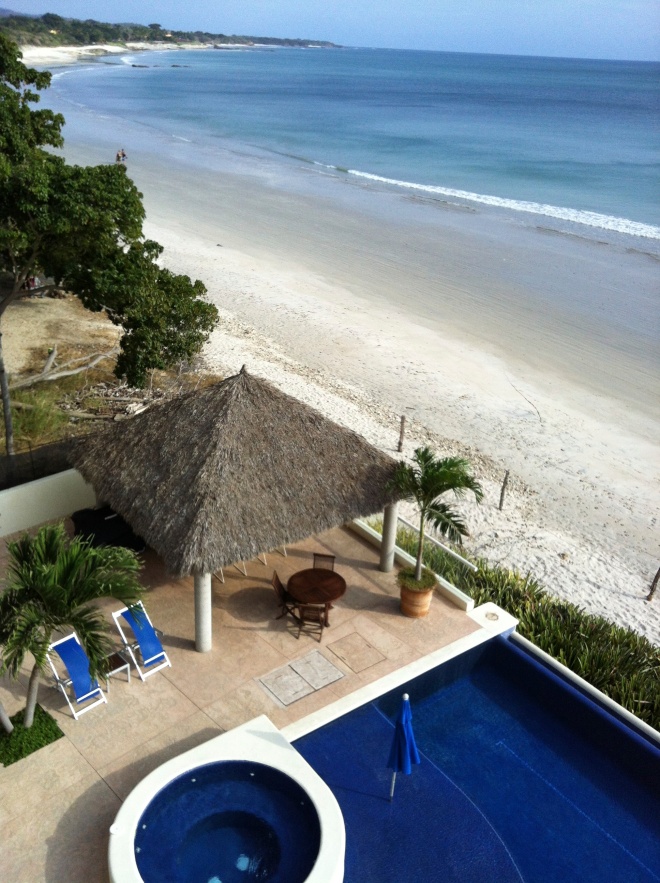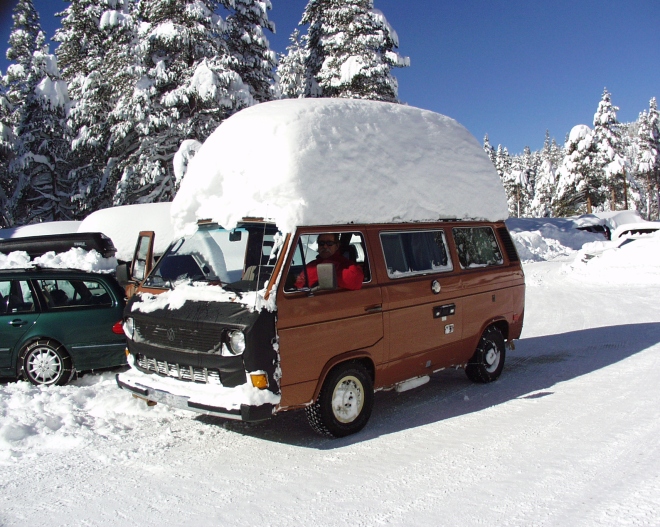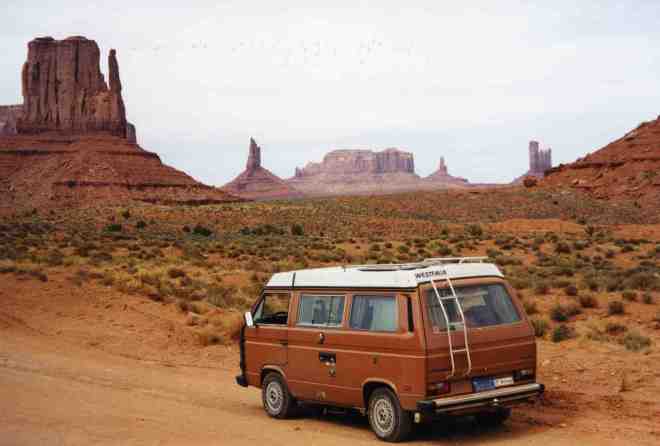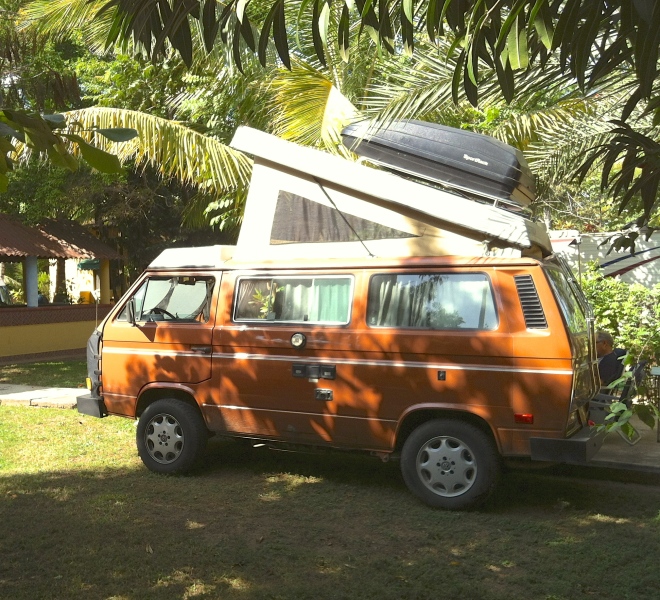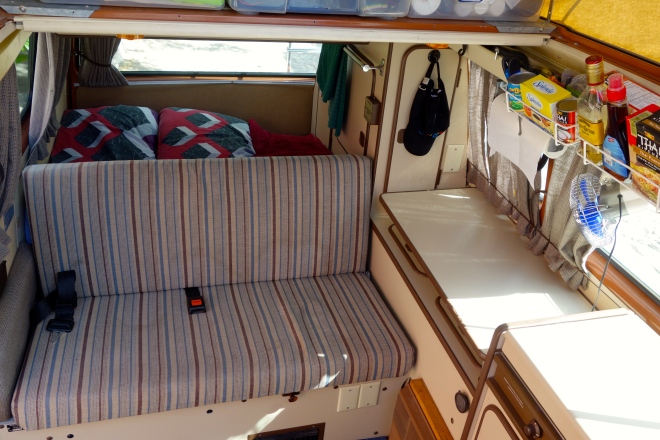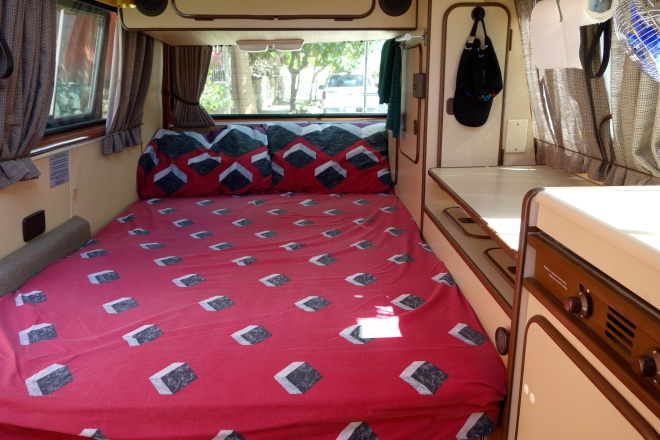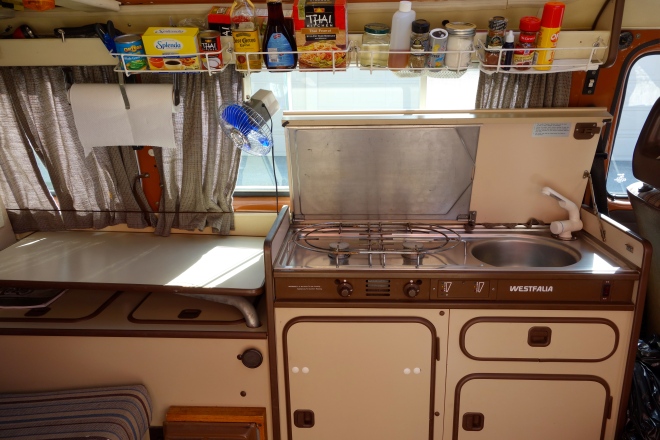It has been almost a two weeks since our last entry, during which we have covered over 800 miles of the Mexican Pacific coast, through its most beautiful and isolated section to the hurly burly of Acapulco, its biggest and certainly most congested city.
Here’s a little of what we saw and experienced along this long and often rather isolated coast. We left Puerto Vallarta and drove south, first of all through the city itself and then its beautiful exit along a dramatic coast with the road hung into the mountainside. This is now an area of rather established and elegant homes, and was the area where ‘Night of the Iguana’ was filmed. The atmosphere still lingers–jungle, mountainside diving into the sea, hot and steamy with humidity with just a hint of Elizabeth Taylor’s perfume still in the air.
For most of this long coast, we encountered campground after campground where we expected to have to beg our way into what we were told would be a packed campground only to find them virtually deserted. This wasn’t always the case—witness our first night from Puerto Vallerta in the small town of Punta Perula where a filled campground went off together to dine at a beachside palapa restaurant featuring an amazing 8 year old guitarist who even managed to include an empty beer bottle into his performance.
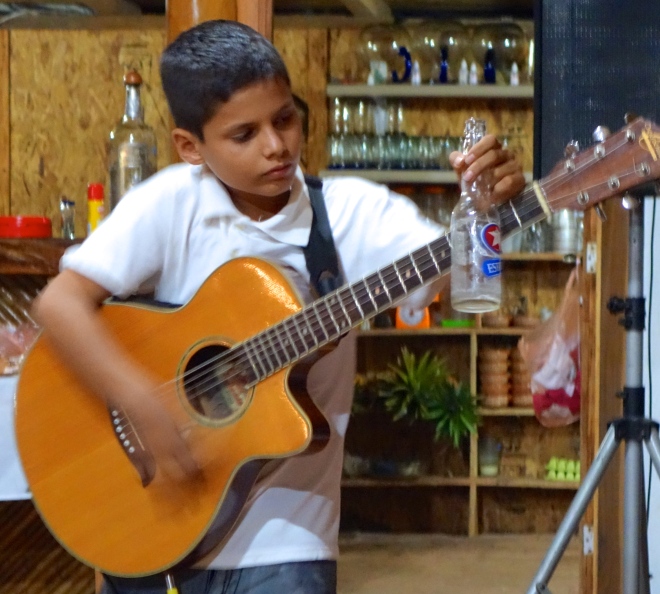
Budding Jimmy Hendrix who can also play his guitar when behind his head
But here is La Boca, renowned for its over 100 campsite capacity and amazingly beautiful beach and foliage. We had really looked forward to it because it is adjacent to Boca de Iguana, the site of our friends Warren and Tuli’s beach house. But it was absolutely deserted; we were one of nine campers there.
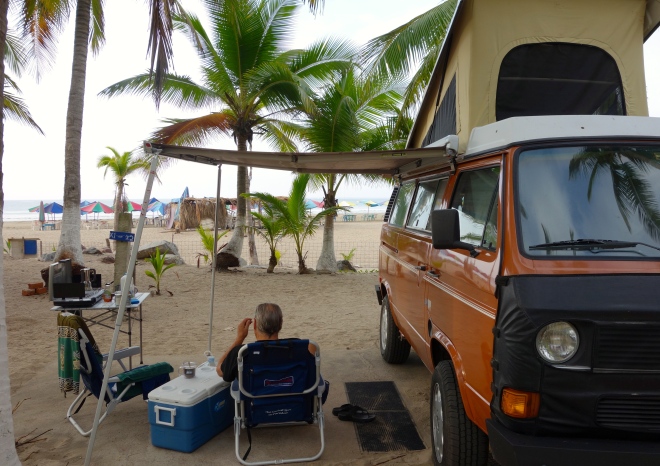
Dan at beachside in the deserted campground at La Boca de Iguana
We did find a full campground in Melaque, right in the middle of town but on the beach and surprisingly quiet at night. The town was the site of a settlement of Irish Catholic Americans who refused to fight their Catholic brothers in the Mexican American War, and formed the San Patricio part of town when offered a home by the Mexican government. One still sees an occasional redhead covered with freckles in the shops and streets, and they are clearly not tourists.
From there we went into the state of Michoacán, famous as a bastion of the drug trade and the La Familia cartel up in the mountains to the east, and for a coastline widely thought to be the most beautiful in Mexico. We certainly would agree, particularly for its similarity to Big Sur on the California coast between Los Angeles and San Francisco, and featuring spectacular views from the highway hacked into the jungle and the mountainside. We saw almost no other vehicles through its entire length, and while it is slow and twisty it is absolutely stunning in its beauty.
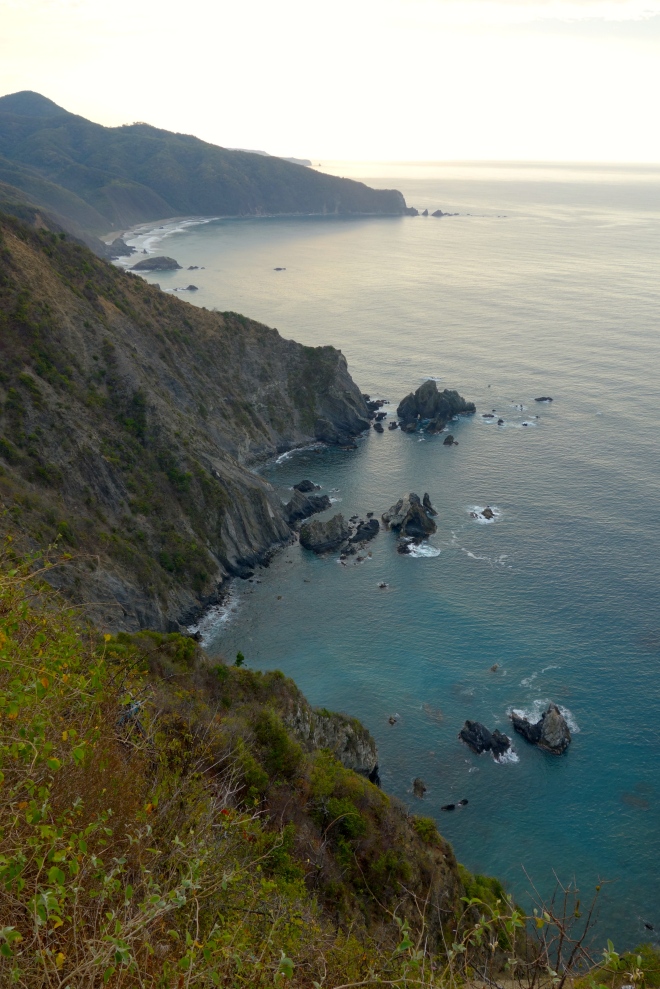
Michoacan equivalent to the view from Bixby Bridge
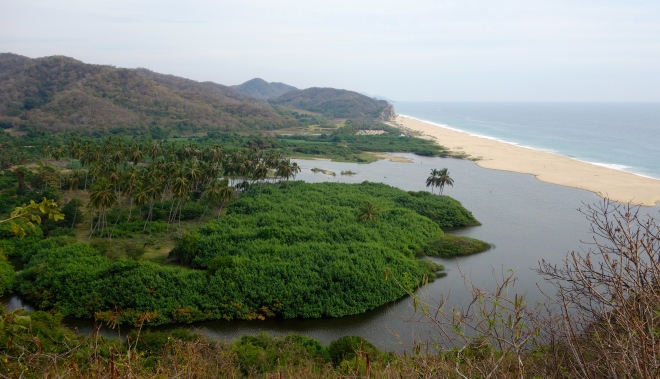
Part of the seemingly endless beach
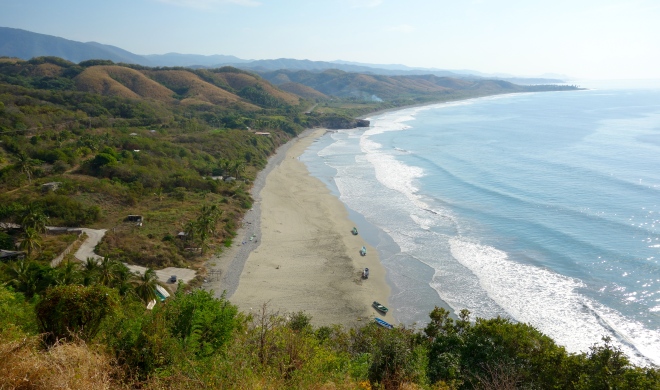
And it just goes on and on…
We spent one night in the van in a deserted seaside village famous for its turtles behind the palapas as the only visitors, then stumbled on a small beachside village called Neixpa the next day which seems to be inhabited primarily by American hippy surfers, one of whom has been living here for 33 years. We had lunch at the Mary Jane Restaurant above the beach only to discover the source of its name when we noticed that they sold more than food from behind the counter and the surfers at the next table were smoking something decidedly not tobacco.
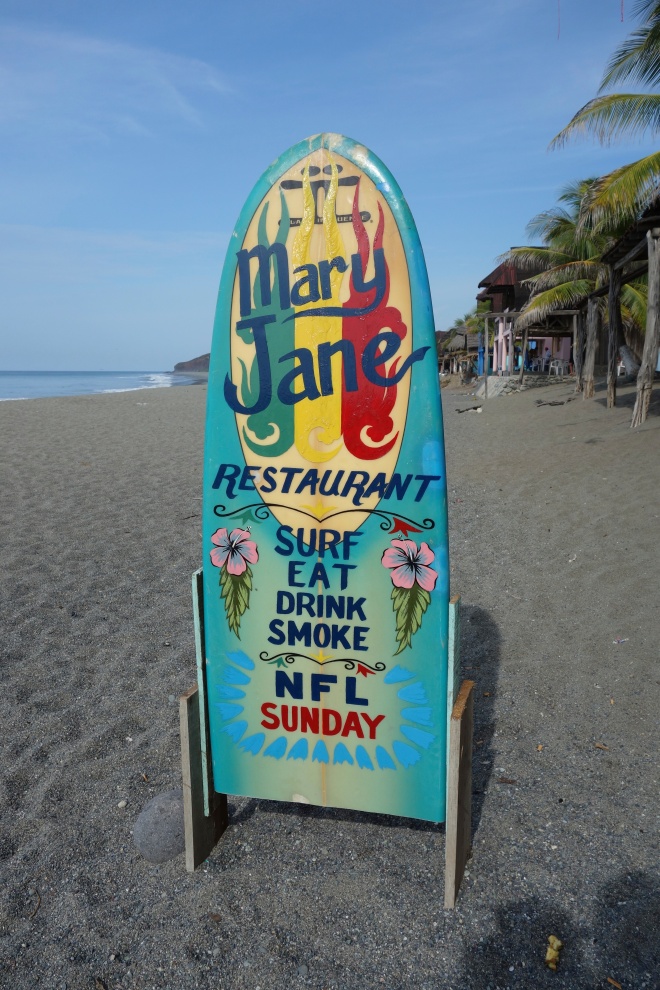
The Mary Jane Restaurant
We found a really nice camping spot on grass under coconut trees, but the grass itself was infested with vicious biting ants who were intent on eating Bonnie’s feet and ankles off. So it was on to Ixtapa and Zihuatanejo.
This was not a new location for us as we had been to ‘Ztown’ when last living in San Miguel. It remains primarily a large fishing village with a significant tourist operation focused on its famous beach called La Ropa. We spent an afternoon swimming and walking it again and wishing our friends Sue and Tom were in residence in the hotel at the north end of the beach which they visit each year.
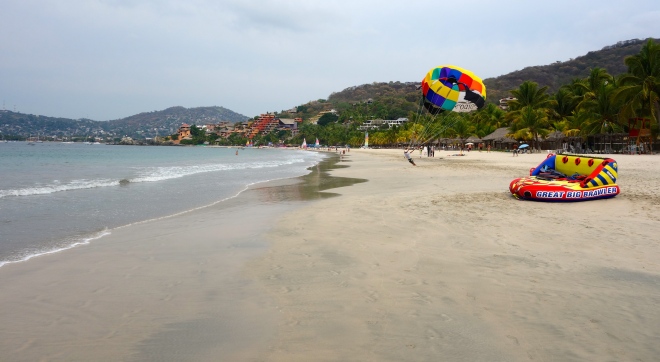
La Ropa beach in the early morning
Ixtapa is a different story. After the ‘success’ of Cancun on the Yucatan coast, the government decided that they needed a similar upscale and inclusive resort community on the Pacific, and Ixtapa was it. While we really only drove through it coming and going from the rather upscale campground we stayed in, it is boulevarded, treelined and hotel bordered, with almost no access to the beach for its citizens.
Overall what is most apparent to a North American traveling down this coast is the lack of Americans. From the time we left Puerta Vallarta almost all travelers from the U.S. have disappeared, and we were told over and over again that the ‘snowbirds’ have flown elsewhere this winter. The stories of drug cartel violence has taken a toll beyond the lives lost; there has been a tremendous loss of livelihood as well.
We have seen exceptions. San Miguel where we spent Christmas is still bustling with visitors, but it is a different crowd. Many of those Americans, even those with homes in San Miguel, have stayed in the States and have been replaced by tourists from other parts of Mexico, chiefly from Mexico City and Guadalajara. However, for most of the Mexico we have traveled through, the Americans are gone.
Ah–but those Quebecois–they are everywhere! Across a whole continent they have come from far off frozen Quebec, pulling their trailers, traveling often together and certainly collecting to camp together along this wild and lawless coast! Spanish may be the primary language here, but it is Canadian French that is the second language. A game of boules in the quiet of the afternoon,
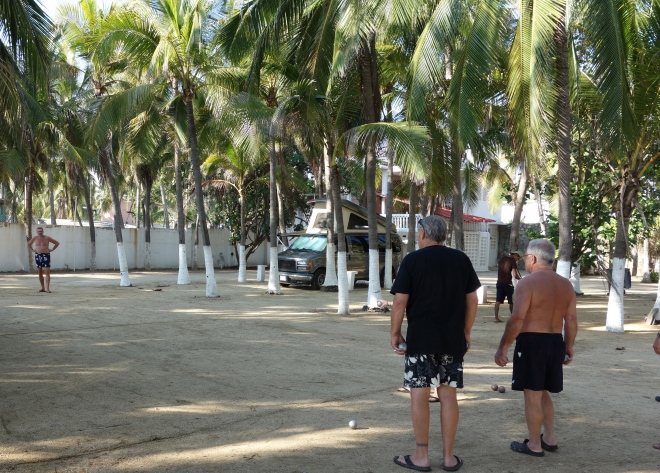
The 4PM Quebecois boules game
a hockey game broadcast from Montreal but still available on the TV mounted into the side of the trailer,
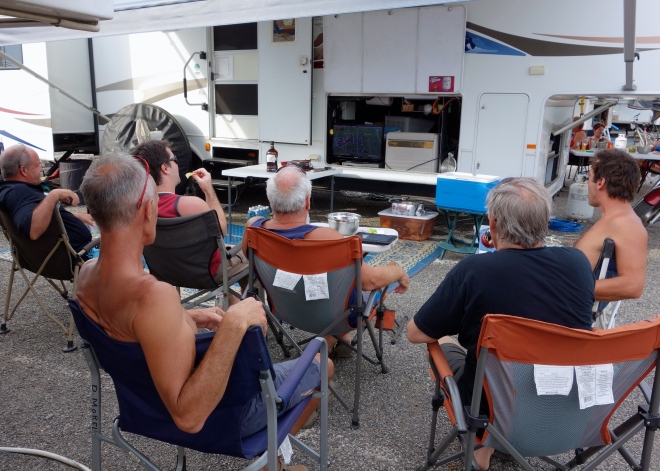
Hockey straight from Montreal to the campground at Ixtapa
some good French wine…the Quebecois community is alive and off to far-flung adventures!
